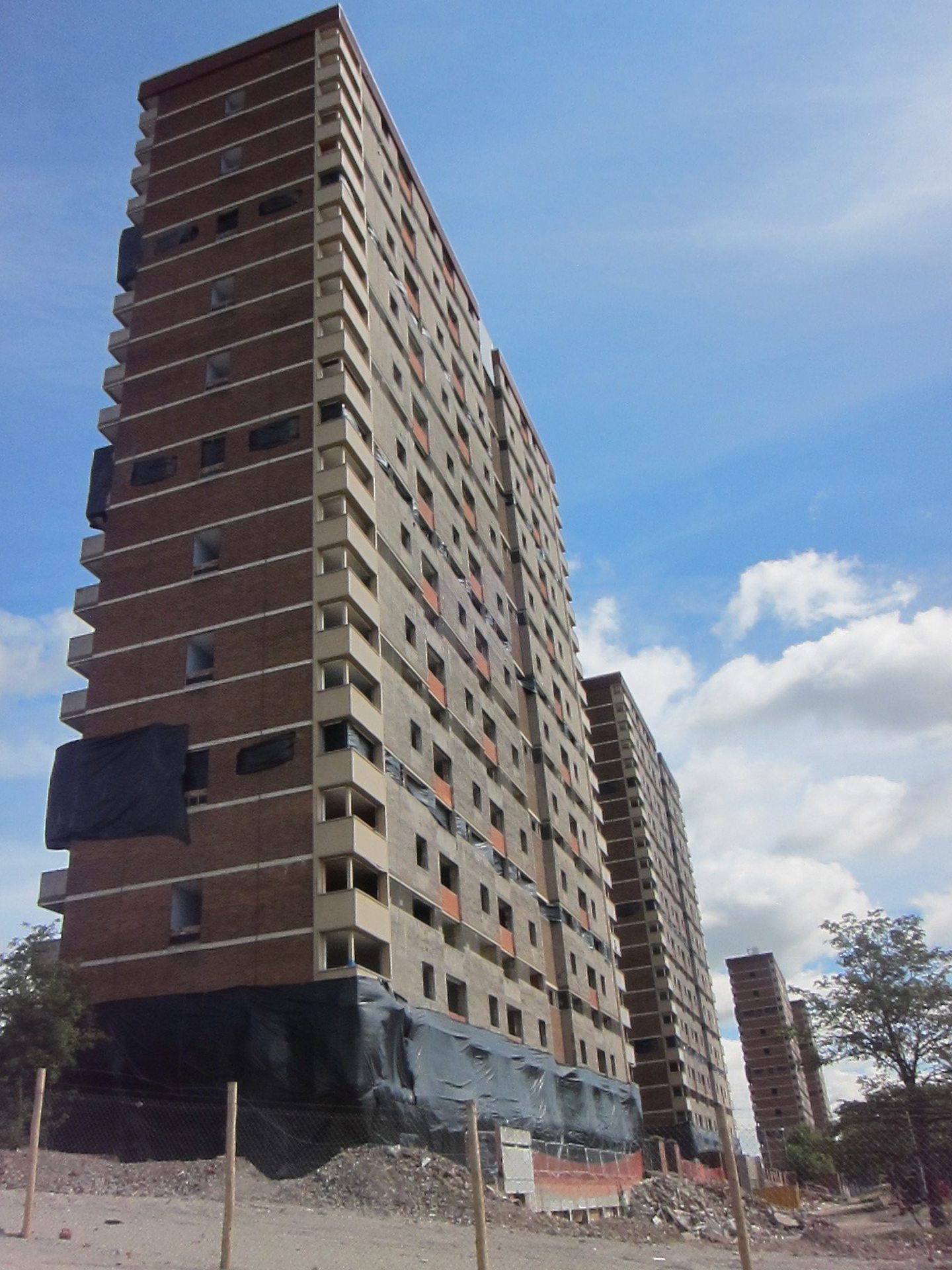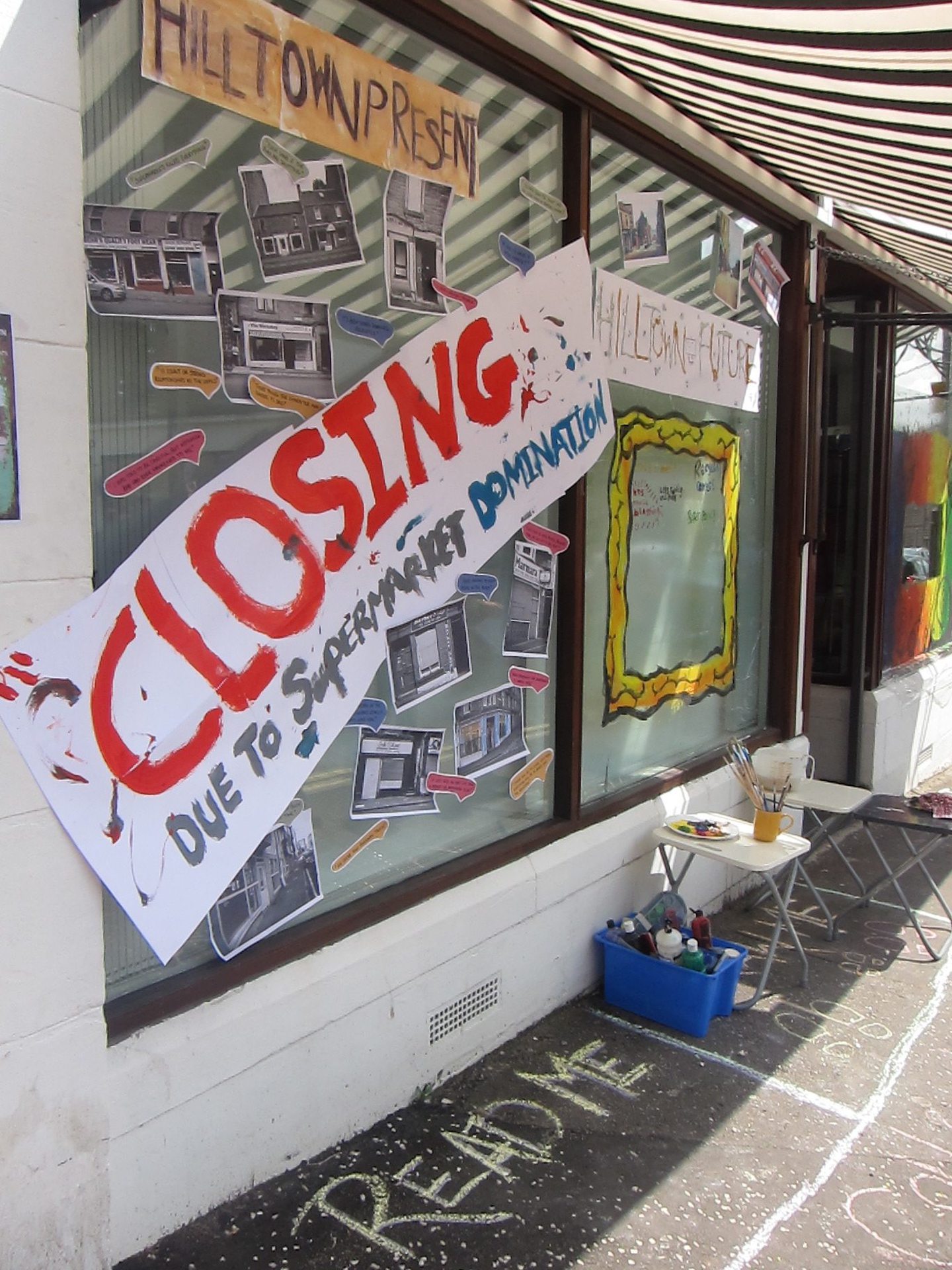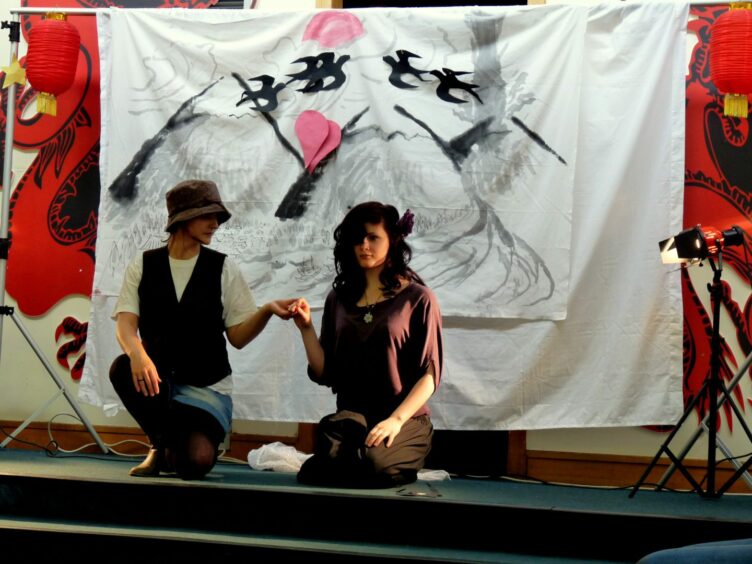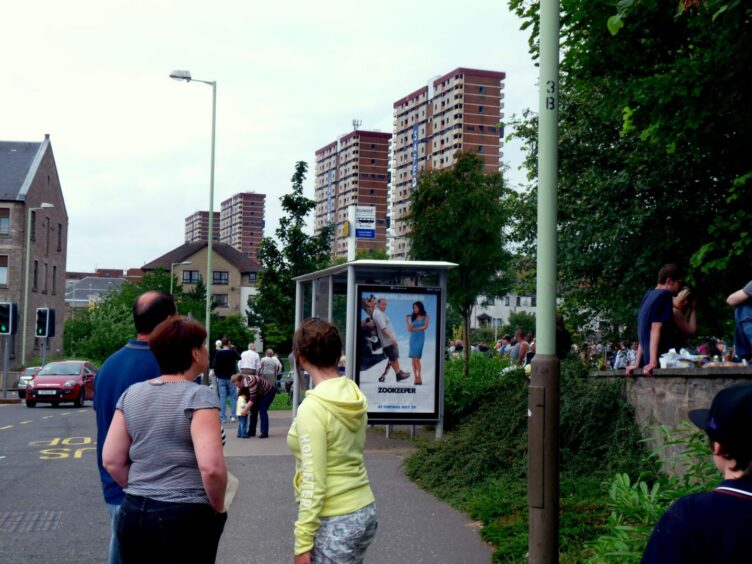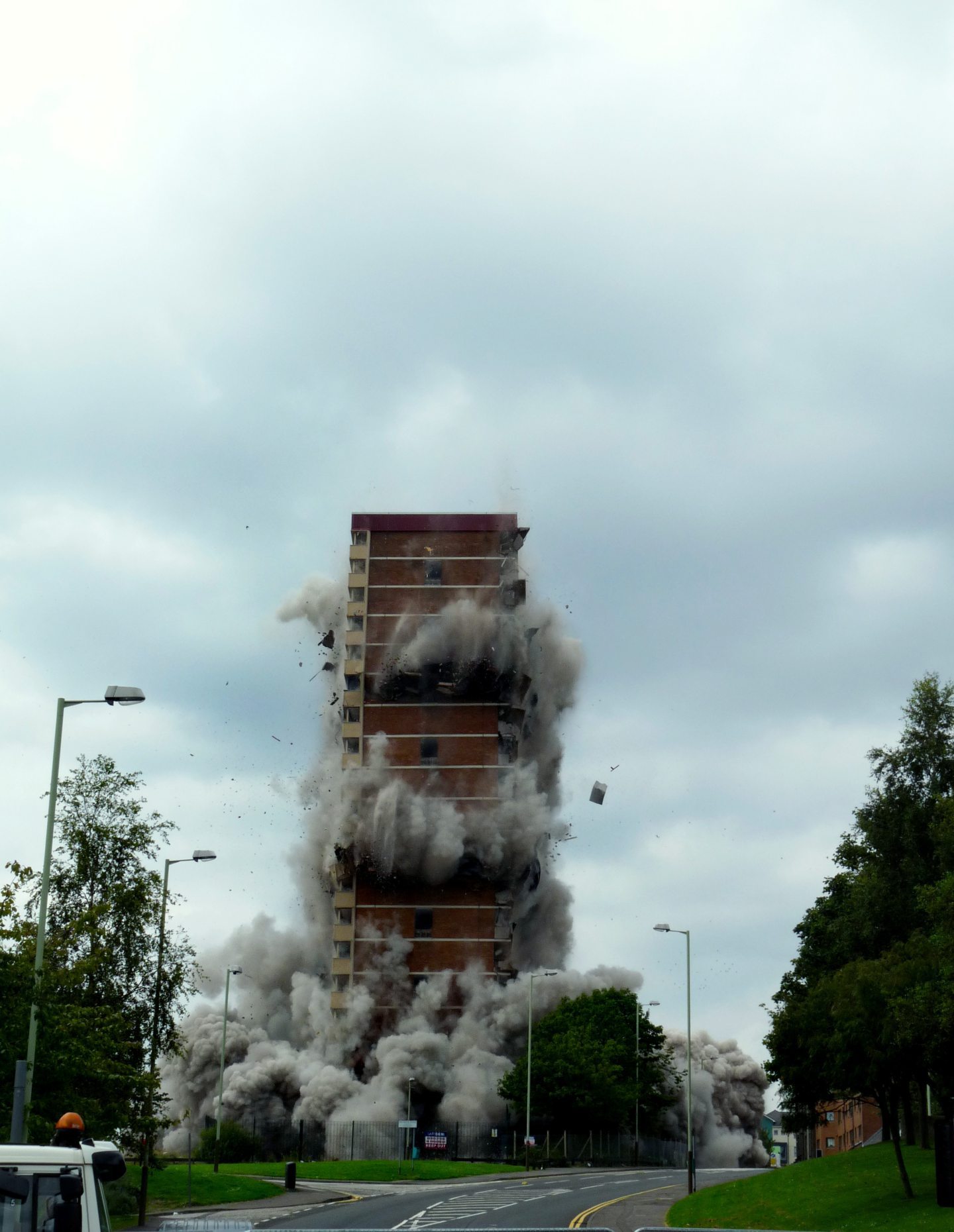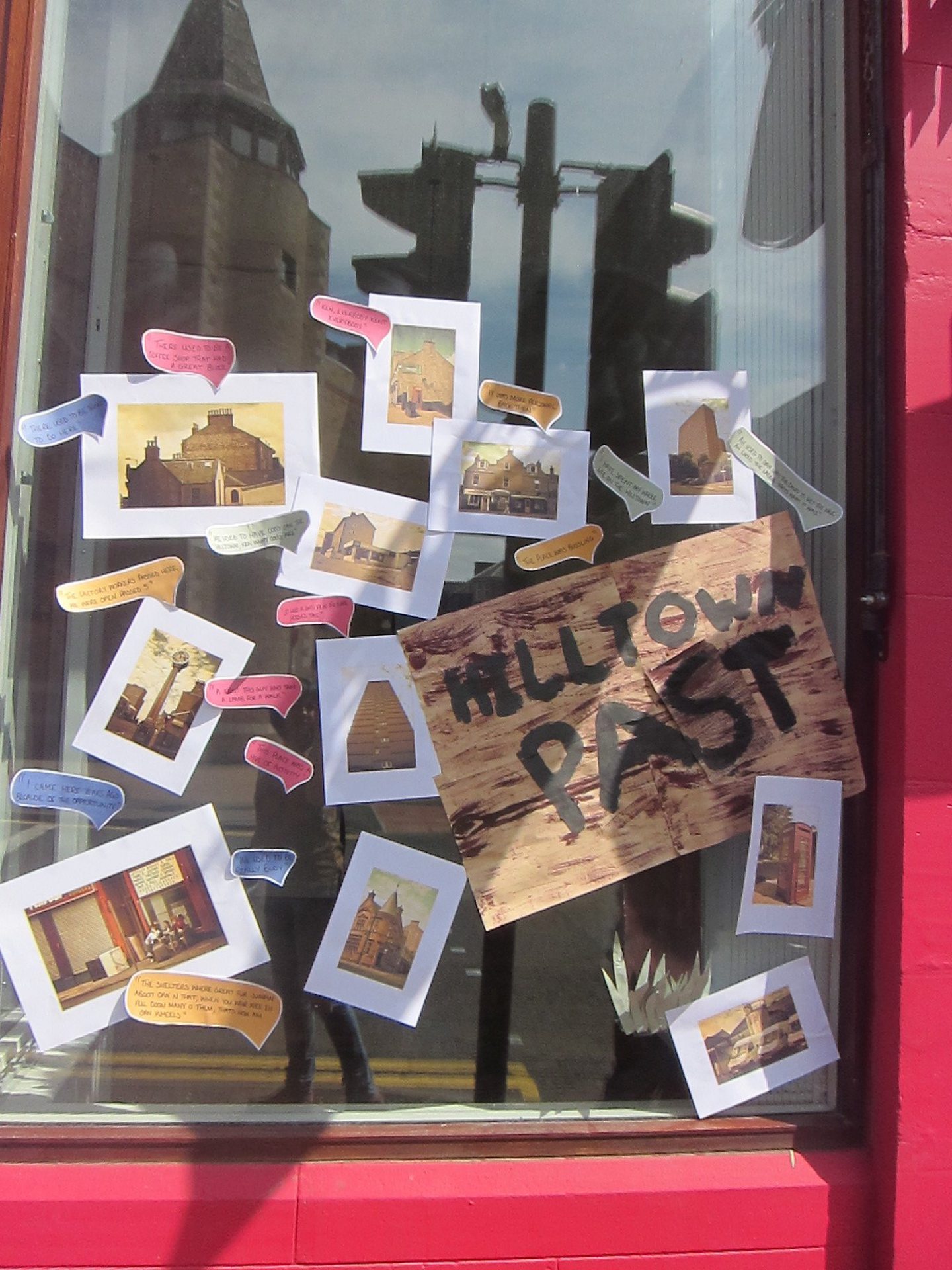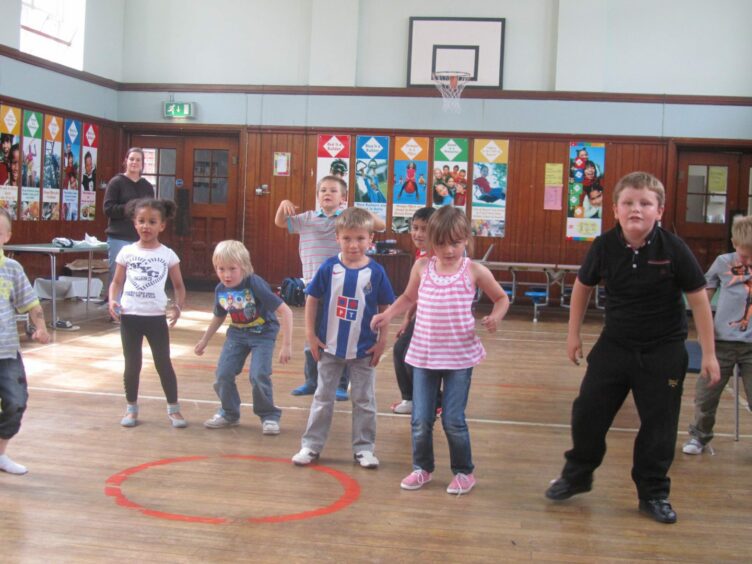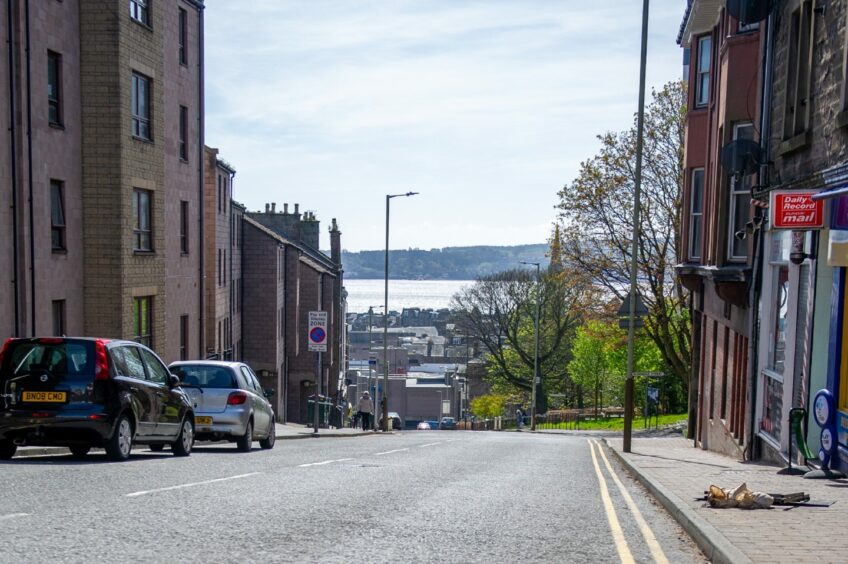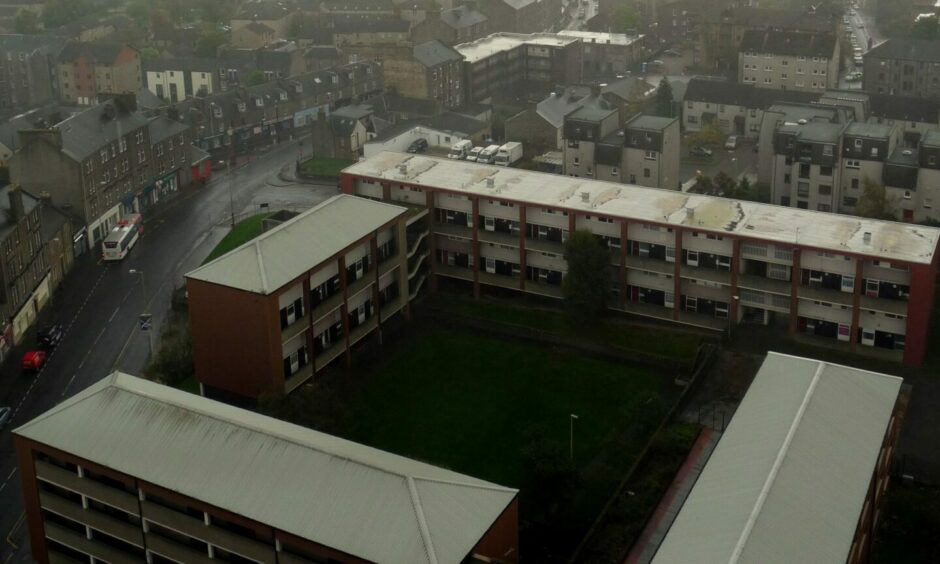
Things were changing in Dundee’s Hilltown 12 years ago.
Signalling the end of an era, four multi-storey blocks, built in 1968, which formed a familiar silhouette on the city’s skyline would come crashing down that summer.
Initially these high-rises were treated with wonder.
The four Alexander Street tower blocks were seen as a golden opportunity for people to escape the decaying tenements and enjoy space, light and comfort with great views.
Eventually, though, things changed for the worse.
The £3.7 million demolition was part of a regeneration project for the Hilltown area.
Down the towers would come.
Nothing would be the same again.
So, with huge change ahead, a year-long project named Changing Faces of Hilltown sought to create a visual and oral record of the Hilltown.
Hilltown scenes captured and recorded by young people
These atmospheric images were taken during that project and will bring back memories of how the Hilltown – and those tower blocks, lost to time – looked in 2011.
The photographs are being shown to mark the 22nd anniversary of the Hilltown-based charity Front Lounge, known as Pure Media UK back then.
It was formed in September 2001 with the aim of enabling people to unlock potential and realise the fullness of life through creativity and the arts.
Changing Faces of Hilltown aimed to build relationships with the various communities in and around Hilltown by getting to know their stories about working and living there.
Captured and recorded by young people, many emerging artists and musicians, the project aimed to immerse itself in the community, not just scratch the surface, ensuring a creative dialogue between the generations, different ethnic communities and social groups.
The hope?
That, once the dust had (literally) settled, a shared vision of the future would be realised.
So how did it work in practice?
Chika Inatimi, project leader at Front Lounge, said: “Funded by the Heritage Lottery Fund and Dundee Regeneration Fund, we formed a team of volunteers, hungry for stories and content, who set off on a mission.
“They left no stone unturned, working with schools, local partners and, crucially, the multi-cultural hub living and working on Hilltown, some spending their final days in the multis before their demolition.
“With both heart-warming and soul-destroying stories gathered from the Asian, Chinese, African, East European and indigenous communities, we celebrated the stories of the characters proud to share their experiences alongside the more reticent, quiet, yet equally important voices.”
There were tales of a close-knit community, where everyone knew everyone, memories of a once-vibrant hub with lots of great shops, and stories of the sad loss of the Hilltown shops and the grievance that was still keenly felt.
Chika said: “Despite the rich cultural tapestry of Hilltown, we heard about the loss of community, the closure of shops, and the feeling of disconnection.
“But most of all?
“We documented hope for the future of Hilltown and the children growing up here.
“Needless to say, the content we captured had to be bottled – this was the lifeblood of Hilltown.”
The charity went on to share and showcase its findings through exhibitions, school holiday clubs, performances, the Festival of Light and, most notably, the book and accompanying film: Changing Faces of Hilltown: Scuse Me…When Were The Multis Knocked Down?
The appetite for the book was insatiable – they ran out in three days and still get inquiries today.
So, 12 years on, how has the Hilltown changed?
Chika added: “For us, the answer to that is far from black and white.
“While the area’s socio-economic struggles remain, with ongoing, visible challenges around unemployment, crime and drug and alcohol abuse, we’d argue that Hilltown’s sense of community has strengthened.
“As we reflect on the changes within a city, we shouldn’t just reflect on the stats and the measurables.
“We need to shine a light on the real lives within that community, the individuals and families living through that change.
“We must listen to them, document what they say, and learn from them.
“Only then can we plan a brighter and more sustainable future.”
The Hilltown towers fell in July 2011
The 440-home Alexander Street multis were razed to the ground in July 2011 with some 135kg of explosives and 4,500 detonators used in the operation by Safedem.
Plumes of dust and dirt could be seen from miles around, later clearing to show empty spaces in the area thousands of people once called home.
The rumble as debris came crashing down could be heard as far afield as Monifieth.
Elaine Pratt, Dundee City Council communities officer, is well-placed to talk about the changes because her office stands on the site of the former multi-storey complex.
She said: “I remember Changing Faces of Hilltown project well, and its timing alongside the multis coming down.
“The multis were no longer desirable for people to live in so things had to change.
“People deserve good and safe housing, but there’s often resistance to that change and a lot of emotion around it.
“But that’s when people speak up and, in many ways, when the community comes together.
“The project illustrated how people felt and allowed them to creatively demonstrate what they’ve gone through and continue to go through.
“I think Hilltown is even more diverse now than it was then.
“We have so many different nationalities and cultures, and they’re living among each other, making friends and working together.
“Like so many other parts of the city, and other cities, there are huge challenges here but Hilltown is a strong and resilient community too.
“We run so many activities from our community centre.”
Layla Brown, a music graduate whose involvement with Front Lounge began as a young performer, was creative director 12 years ago, and said 2011 was the right time to explore the richness and diversity of the place and its people.
It seemed vital to Layla that the stories of what made it what it is, what people remembered from the past and what they wanted for the future, should not be lost.
She said: “It’s so important for cities, especially those underdoing massive regeneration, to chat with those who built the communities in the first place, the first-generation communities.
“Changing Faces of Hilltown achieved that brilliantly by using creative arts – in my view, the best way to encourage people to share and open up.
“It was important that we had all these outputs, like the exhibitions, book and film, as it allowed us to build relationships with the locals.
“Inviting such a diverse group of people of many nationalities and cultures and seeing what we’d produced with their words built a strong sense of pride.
“You can have all the reports in the world, but creative output like pictures, films and books are so accessible – creating a time capsule people can revisit again and again.
“Everyone can identify with them, enjoy them and be moved by the emotions within them.”
Like a time capsule, these photographs and videos being shown by the charity today will no doubt transport many more people back in time to the Hilltown of 2011.
